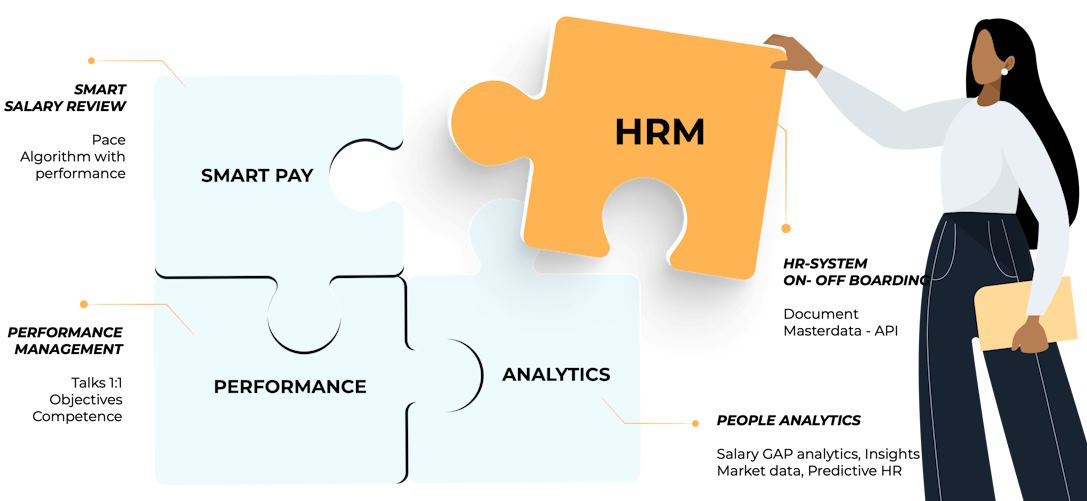In today’s competitive business landscape, organizations are constantly seeking ways to enhance employee performance, drive productivity, and achieve their strategic objectives. One powerful tool that has proven effective in this pursuit is the implementation of performance management systems. A well-designed performance management system enables organizations to set clear performance expectations, measure progress, provide feedback, and foster continuous improvement. However, the road to successful implementation is riddled with challenges and potential pitfalls.
Best Practices for Implementing Performance Management Systems
Define clear performance expectations and goals
To lay a strong foundation for an effective performance management system, organizations must define clear performance expectations and goals. This involves aligning individual goals with the broader objectives of the organization. By establishing a direct link between individual contributions and organizational success, employees gain a sense of purpose and direction. Additionally, setting SMART goals is crucial. SMART goals are Specific, Measurable, Achievable, Relevant, and Time-bound. This framework ensures that goals are well-defined, quantifiable, attainable, aligned with the organization’s vision, and have a clear timeframe for completion.
Establish effective performance measurement methods
Selecting appropriate performance metrics and indicators is vital for accurately assessing employee performance. Organizations should identify metrics that align with their specific objectives and provide meaningful insights into progress. These metrics may vary across different roles and departments, ranging from sales targets and customer satisfaction ratings to productivity measures and project milestones. It is also important to incorporate both qualitative and quantitative feedback mechanisms. While quantitative data offers objective insights, qualitative feedback captures subjective aspects such as teamwork, problem-solving abilities, and communication skills, providing a comprehensive evaluation.
Implement regular and constructive performance feedback
A key aspect of successful performance management systems is the implementation of regular and constructive feedback. Encouraging ongoing communication between managers and employees promotes a supportive and collaborative work environment. Managers should provide timely feedback that is specific, actionable, and focused on improvement. Recognizing and acknowledging achievements is equally important. Timely feedback and recognition not only motivate employees but also help them understand their strengths and areas for development, fostering a culture of continuous improvement.
Encourage employee participation and engagement
Engaging employees in the performance management process enhances their commitment and ownership of their own performance. Involving employees in goal-setting and performance planning allows them to contribute their perspectives and insights, leading to more meaningful and attainable goals. This participatory approach also encourages a sense of accountability and autonomy, as employees feel more invested in their own success. Furthermore, organizations should promote a culture of continuous improvement and learning. Encouraging employees to seek opportunities for growth, providing access to training and development programs, and fostering knowledge-sharing initiatives contribute to a motivated and high-performing workforce.

Pitfalls to Avoid in Performance Management System Implementation
Lack of leadership commitment and support
One of the most critical pitfalls to avoid when implementing a performance management system is the lack of leadership commitment and support. Top management buy-in and involvement are essential for the success of any organizational initiative. Leaders should actively champion the performance management system, communicate its importance, and lead by example. By demonstrating their commitment, leaders create a culture where employees perceive the system as a valuable tool rather than a mere administrative burden. Additionally, addressing resistance to change and fostering a supportive environment through effective change management strategies can help overcome any reluctance or skepticism among employees.
Unclear or inconsistent performance criteria
 Unclear or inconsistent performance criteria can undermine the effectiveness of a performance management system. It is crucial to ensure alignment between organizational goals and individual objectives. Clear communication of performance expectations helps employees understand what is expected of them and how their contributions contribute to the organization’s success. Furthermore, organizations should strive to avoid subjective evaluations and biases in performance assessments. Using objective measures and standardized evaluation criteria reduces the potential for unfair judgments and promotes a fair and equitable performance evaluation process.
Unclear or inconsistent performance criteria can undermine the effectiveness of a performance management system. It is crucial to ensure alignment between organizational goals and individual objectives. Clear communication of performance expectations helps employees understand what is expected of them and how their contributions contribute to the organization’s success. Furthermore, organizations should strive to avoid subjective evaluations and biases in performance assessments. Using objective measures and standardized evaluation criteria reduces the potential for unfair judgments and promotes a fair and equitable performance evaluation process.
Inadequate training and communication
Inadequate training and communication can hinder the successful implementation of a performance management system. Providing comprehensive training for managers and employees is essential to ensure that everyone understands the system’s purpose, procedures, and their respective roles. Training programs should cover topics such as goal setting, performance measurement, feedback delivery, and the use of performance management tools. Furthermore, establishing clear communication channels is crucial to clarify expectations, address concerns, and provide ongoing guidance. Effective communication fosters transparency, trust, and engagement, contributing to a smoother implementation process.
Overemphasis on administrative tasks and paperwork
Another common pitfall is overemphasizing administrative tasks and paperwork, which can detract from the system’s intended focus on performance improvement. While administrative tasks are necessary, organizations should strive to streamline processes and leverage technology to increase efficiency. Automating routine tasks, such as data collection and report generation, frees up time for managers and employees to focus on more meaningful aspects of performance management, such as feedback and coaching. Striking a balance between administrative requirements and the system’s core purpose of driving performance improvement ensures that the system remains practical, relevant, and user-friendly.
